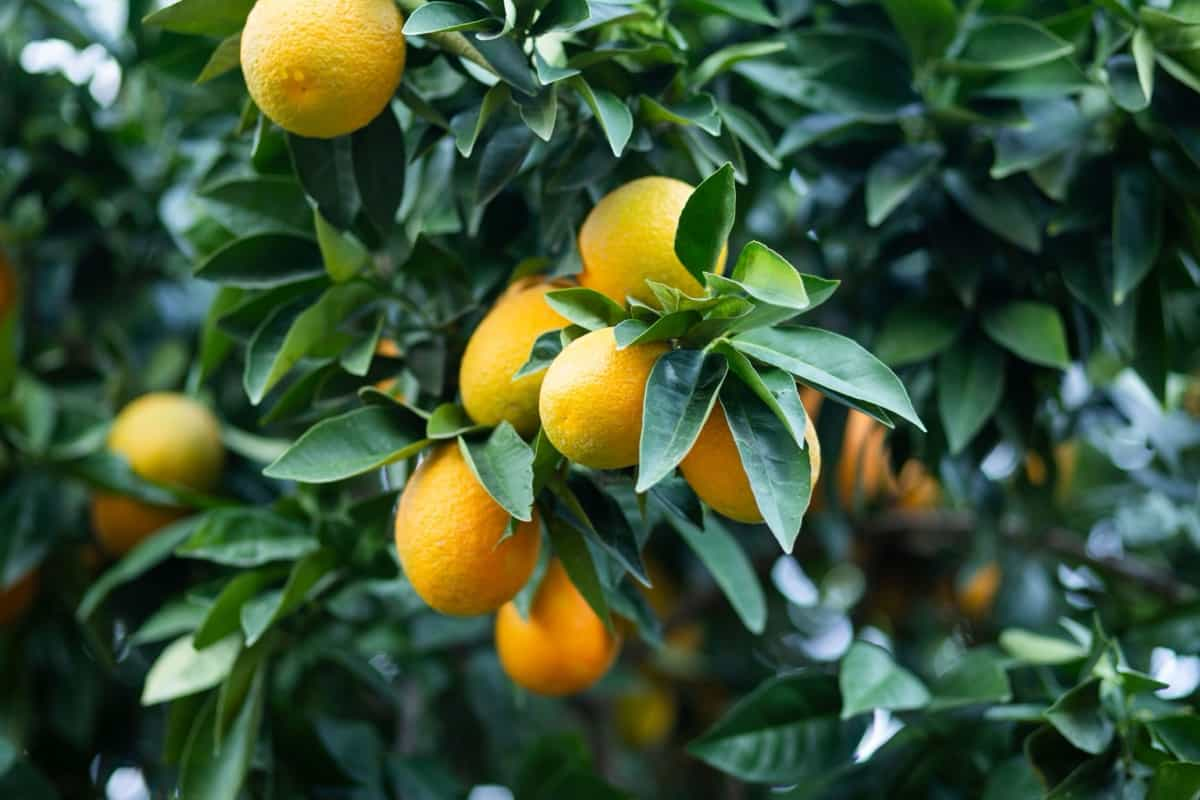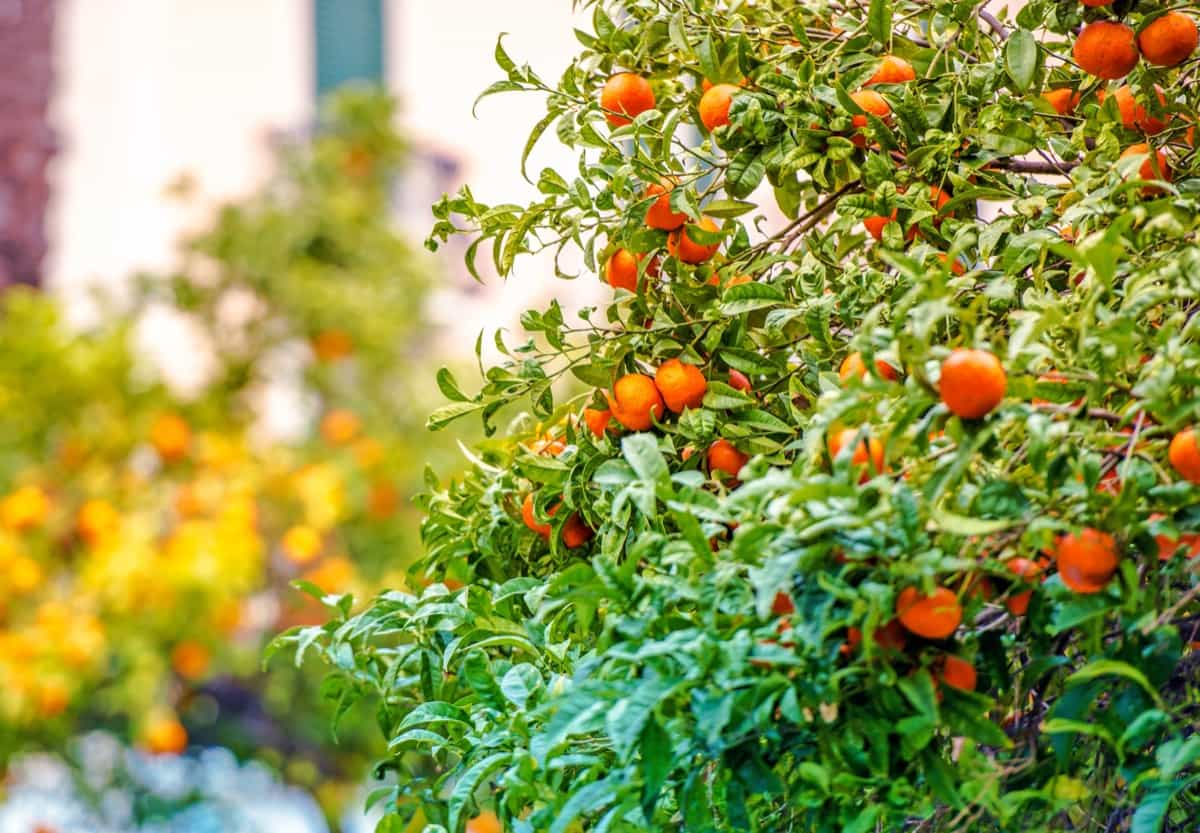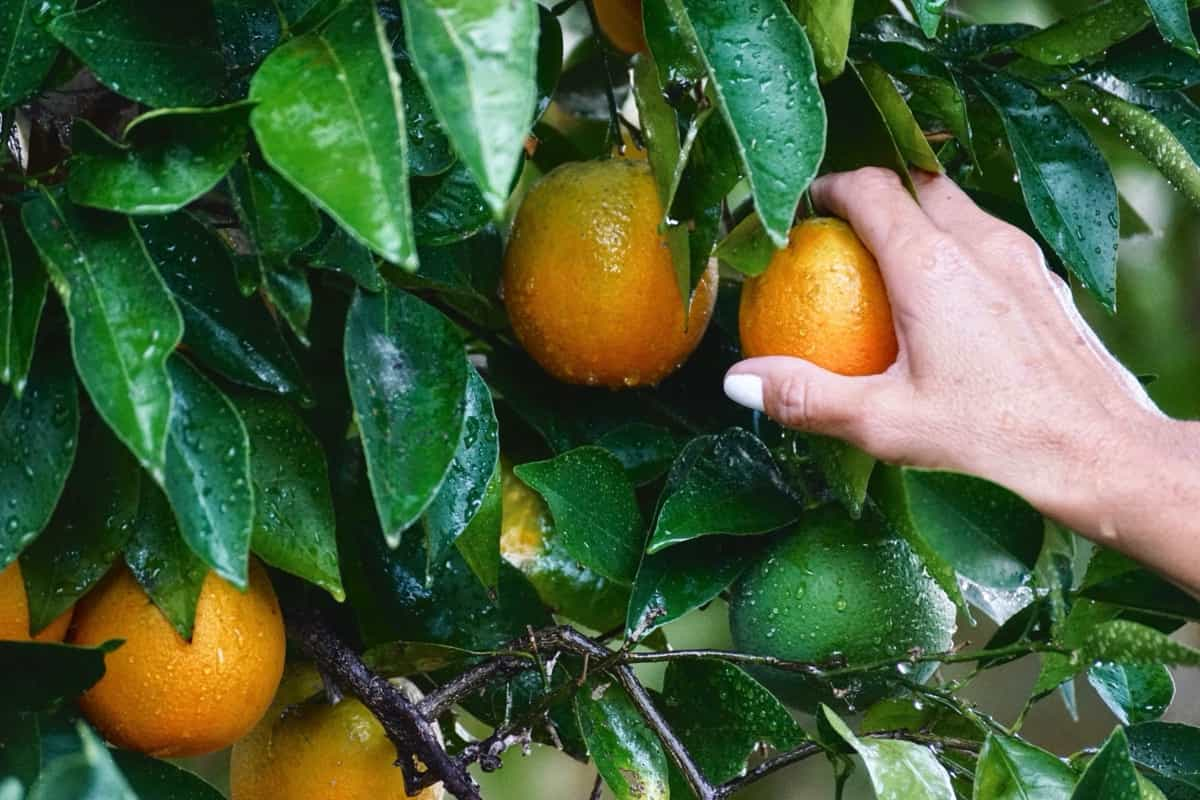Embark on a comprehensive journey into the world of Kinnow farming in India, where we unravel the intricacies of cultivation costs, profits, and production across different states. Whether you’re a beginner eager to start or an advanced enthusiast seeking insights, this blog is your guide. Explore the nuances of Kinnow cultivation, from expenses to yields, as we navigate through the diverse landscape of states in India, providing valuable knowledge for every level of farmer.

Overview of Kinnow Farming
Kinnow is a hybrid citrus fruit that is widely cultivated in northwestern India, especially in Punjab, Haryana, Rajasthan, and Himachal Pradesh. It is a cross between King mandarin and Willow leaf mandarin, developed by Dr. H.B. Frost in 1915 at the University of California, USA. Kinnow source of vitamin C and has a sweet, slightly acidic taste with a rich flavor.
Kinnow is mainly consumed as fresh fruit or juice, but it can also be used for making jams, marmalades, candies, and other products. Kinnow farming is a profitable venture as it yields higher net returns and employment than the traditional wheat-cotton farming system. Kinnow is also suitable for organic cultivation as it requires less irrigation, fertilizer, and plant protection chemicals than other citrus fruits.
Site Selection and Soil Requirements
Kinnow can be grown on a wide range of soils sandy loam to clay loam deep clay loam or acidic soils with good drainage facilities. However, it does not thrive well in saline, alkaline, or waterlogged soils. The optimum pH of the soil for kinnow cultivation should be between 5.5 to 7.5. The site should be selected keeping in mind the climatic conditions, availability of irrigation water, market access, and pest and disease incidence. The site should also be protected from strong winds and frost by planting windbreaks or shelter belts on the boundaries of the orchard.
Propagation and Planting Techniques
Kinnow is propagated by the T-budding method on rough lemon (Gambhir, Soh-minding, or jati khatti) or khana khatta rootstocks. These rootstocks are raised from seeds sown in nursery beds of 2 m x 1 m size with a 15 cm distance between the rows. When the seedlings are 10-12 cm in height, they are transplanted to polythene bags and kept in shade. When the seedlings attain pencil thickness, they are budded with kinnow buds taken from healthy and productive mother plants. The budded plants are kept in shade for 15-20 days and then exposed to sunlight gradually.
The plants are ready for planting in the field when they are one year old. The best season for planting now is from the middle of June (with the onset of the monsoon) to the end of September. Pits of 60x60x60 cm should be dug at least one month before planting, filled with a mixture of topsoil, farmyard manure, and superphosphate. The spacing between the plants should be 6×6 m, which gives a plant density of 111 plants per acre. The plants should be planted in the center of the pits at the same depth as they were in the nursery bags.
In case you missed it: Chinese Broccoli Farming: How to Plant and Grow Kailan/Gai Lan

Irrigation Requirement for Kinnow
Kinnow is a high-yielding mandarin hybrid that requires adequate moisture for optimum growth and fruiting. The irrigation requirement of kinnow depends on the soil type, climate, rainfall, evaporation, and stage of crop growth. Generally, kinnow needs irrigation every 10-15 days in summer and every 20-25 days in winter.
The amount of water applied per irrigation should be sufficient to wet the root zone of the plant. Drip irrigation is recommended for kinnow as it saves water, improves nutrient use efficiency, and reduces weed growth. The frequency and duration of drip irrigation should be adjusted to the soil moisture status and crop water demand.
Best Fertilizer for Kinnow
Kinnow is a heavy feeder of nutrients and requires balanced fertilization for high yield and quality. The fertilizer requirement of kinnow varies with the age, size, yield, and soil fertility of the plant. A general recommendation is to apply 500 g of nitrogen (N), 250 g of phosphorus (P), and 750 g of potassium (K) per plant per year for mature known trees.
The fertilizer applied in split doses during February-March, June-July, and September-October. The fertilizer should be broadcasted in a circular band around the tree canopy and incorporated into the soil by light hoeing or irrigation. Organic manures like farmyard manure, compost, or vermicompost can also be applied to improve soil health and nutrient availability.
Kinnow Pest and Disease Management
Citrus psylla: It is a sucking insect that feeds on young shoots and leaves, causing curling, yellowing and stunting of growth. It also transmits a bacterial disease called citrus greening or Huanglongbing (HLB) that causes mottling, chlorosis, and premature fruit drop. The management of citrus psylla involves regular monitoring, pruning of infected branches, spraying of insecticides such as imidacloprid, acetamiprid, or thiamethoxam, and use of resistant rootstocks such as kharna khatta.
Citrus leaf miner: It is a tiny moth that lays eggs on young leaves, where the larvae mine the leaf tissues, causing silvery trails and distortion and drying of leaves. The management of citrus leaf miners involves the removal of affected leaves, spraying of insecticides such as spinosad, abamectin, or chlorantraniliprole, and use of pheromone traps to attract and kill adult moths.
Citrus canker: It is a bacterial disease that causes raised lesions on leaves, twigs, and fruits, which later become corky and crack open. It also causes defoliation, dieback, and fruit drop. The management of citrus canker involves:
- Removal and burning of infected plant parts.
- Spraying of copper-based fungicides such as copper oxychloride or copper hydroxide.
- Use of resistant varieties such as PAU Kinnow-1 or Kinnow LS.
Citrus scab: Fungal disease that causes raised pustules on leaves, twigs, and fruits, which later become scaly and brown. It also causes deformation and cracking of fruits. The management of citrus scab involves removal of affected plant parts, spraying of fungicides such as mancozeb, carbendazim, or hexaconazole, and use of resistant varieties such as Daisy or Local.
Organic Practices for Kinnow Cultivation
Kinnow cultivation can be done organically by following some practices that enhance soil fertility, crop health, and pest resistance without using synthetic chemicals.
Mulching: Covering the soil surface with organic materials like straw, leaves, or grass clippings to conserve soil moisture, reduce weed growth, moderate soil temperature, with organic matter to the soil.
In case you missed it: Chinese Broccoli Farming: How to Plant and Grow Kailan/Gai Lan

Vermicomposting: This involves converting organic wastes such as kitchen scraps, animal manures, or crop residues into nutrient-rich compost by using earthworms. Vermicompost can be applied to plants as a source of organic fertilizer that improves soil structure, water-holding capacity, and microbial activity.
Biofertilizers: They are living microorganisms that fix atmospheric nitrogen (N), solubilize phosphorus (P) or potassium (K), or produce plant growth hormones that enhance crop growth and yield. Biofertilizers such as Rhizobium, Azotobacter, Azospirillum, or PSB can be applied to new plants by seed treatment, soil application, or foliar spray.
Biopesticides: They are natural substances or living organisms that control pests and diseases by killing, repelling, or interfering with their life cycle. Biopesticides such as neem oil, garlic extract, Bacillus thuringiensis, or Trichoderma can be applied to know plants by spraying or drenching to prevent or reduce pest and disease infestation.
Harvesting and Post-harvest Management
Kinnow fruits are ready for harvesting when they attain a golden orange color, a TSS/acid ratio of 12:1 to 14:1, and a juice content of 40-50%. The harvesting season of kinnow is from December to February. Using clippers or scissors, carefully harvest the fruits while leaving a small portion of the stem on the fruit.
The fruits should be graded to their size, color, and quality and packed in ventilated wooden or plastic crates lined with paper or straw. The fruits stored in a cool, dry place away from direct sunlight and ethylene sources. The fruits can also be processed into juice, concentrate, jam, jelly, or marmalade.
Economic Viability and Return on Investment
Kinnow cultivation is economically viable and profitable as it has a high yield potential, a good market demand, and a low production cost. The average yield of kinnow in northwestern India was 23.5 tonnes per hectare, the average cost of production was Rs. 1,02,000 per hectare, and the average net return was Rs. 2,55,000 per hectare. The benefit-cost ratio was 3.5:1, and the payback period was four years. Kinnow cultivation also generated 12.78% higher employment than the traditional wheat-cotton farming system.
Sustainability Practices of Kinnow Farming
Kinnow farming can be made more sustainable by adopting practices that conserve natural resources, reduce environmental pollution, and enhance social welfare. These practices include integrated nutrient management, which involves applying nutrients from both organic and inorganic sources to meet crop demand and maintain soil fertility. Integrated pest management is a combination of cultural, mechanical, biological, and chemical methods to control pests and diseases.
In case you missed it: Citrus Farming in the Philippines: Exploring Philipino Citrus Varieties to Growing Citrus Fruits

Integrated water management involves using efficient irrigation methods, such as drip irrigation, sprinkler irrigation, or micro-sprinkler irrigation. Waste management reduces waste generation and recycles materials for productive purposes. Social responsibility ensures fair prices and wages for farmers and workers, providing safe working conditions, healthcare facilities, and education opportunities.
Kinnow Yield Per Acre
Kinnow is a hybrid citrus fruit that is widely cultivated in northwestern India, especially in Punjab, Haryana, Rajasthan, and Himachal Pradesh. Kinnow is a high-yielding crop that can produce up to 25-30 tonnes of fruits per hectare (10-12 tonnes per acre) under optimal conditions. The yield of kinnow depends on various factors such as variety, rootstock, planting density, irrigation, fertilization, pruning, pest and disease management, harvesting, and post-harvest handling.
Kinnow Farming Cost Per Acre in India
The cost of kinnow farming per acre in India varies depending on the region, input prices, labor wages, and management practices. However, a rough estimate of the cost components for kinnow farming per acre in India is given below.
| Category | Cost (Rs.) |
| Land preparation | 5,000 |
| Planting material | 15,000 |
| Irrigation | 5,000 |
| Fertilizer | 10,000 |
| Plant protection | 5,000 |
| Pruning | 2,000 |
| Harvesting | 10,000 |
| Transportation | 5,000 |
| Miscellaneous | 5,000 |
| Total cost | 60,000 |
Kinnow Farming Profit Per Acre in India
The profit of kinnow farming per acre in India depends on the yield and the market price of the fruits. Assuming an average yield of 10 tonnes per acre and an average price of Rs. 15 per kg, the gross income from kinnow farming per acre in India would be Rs. 150000. Subtracting the total cost of Rs. 60000, the net profit would be Rs. 90000 per acre.
Kinnow Season in India
Kinnow is a winter-season fruit that matures from November to March in India. The peak harvesting period is from January to February, when the fruits attain optimum size, color, flavor, and juice content.
Kinnow Plant Life Cycle
The Kinnow plant is a perennial tree that can last 20 years with proper care and management. Its life cycle is divided into four stages: seedling, juvenile, bearing, and senescence. Seedlings germinate in nursery beds and are budded with kinnow scion on suitable rootstocks. Juvenile stage occurs after transplanting and takes three to four years for plants to establish themselves in the field.
Bearding stage begins in the fifth year and continues until the end of plant life. Fruit yield and quality increase with age but may reach a plateau or decline due to senescence or biotic and abiotic stresses. The senescence stage occurs when plants lose vigor and productivity due to aging or adverse environmental conditions, affecting their vigor and productivity.
Kinnow Growing Areas in India
Kinnow, a fruit grown in northwestern India, is primarily grown in Punjab, which covers 52,836 hectares and produces 10,49,977 tonnes annually. The major know-growing states are Punjab, Haryana, Rajasthan, and Himachal Pradesh. Punjab is the leading producer, accounting for 97% of the total area and production.
In case you missed it: Pineapple Farming in the Philippines: Exploring Varieties to Cultivation Economics

Haryana is the second largest producer, accounting for 2% of the total area and production. Rajasthan is the third largest producer, accounting for 1% of the total area and production. Himachal Pradesh is a minor producer, accounting for less than 1% of the total area and production. Kinnow is grown in the Ferozepur, Muktsar, Bathinda, Faridkot, and Sangrur districts.
Top Kinnow-Producing States in India
| State | Production (000 Tonnes) | Share (%) |
| Madhya Pradesh | 2,060.55 | 32.89 |
| Punjab | 1,177.54 | 18.80 |
| Maharashtra | 987.47 | 15.76 |
| Rajasthan | 653.90 | 10.44 |
| Haryana | 602.37 | 9.62 |
| Assam | 209.34 | 3.34 |
| Karnataka | 185.55 | 2.96 |
| Arunachal Pradesh | 67.74 | 1.08 |
| Mizoram | 54.17 | 0.86 |
| Manipur | 47.53 | 0.76 |
In case you missed it: Pepino Melon Farming: Exploring Business Plan to Grow and Market

Conclusion
Exploring Kinnow farming in India unravels a comprehensive understanding of cultivation costs, profits, and production variances across states. This knowledge equips farmers for informed decision-making, fostering a sustainable and profitable Kinnow cultivation landscape nationwide.
- Types of Pesticides Used in Agriculture: A Beginner’s Guide
- Economical Aquaculture: A Guide to Low-Budget Fish Farming
- 15 Common Planting Errors That Can Doom Your Fruit Trees
- How to Make Houseplants Bushy: Effective Tips and Ideas
- Innovative Strategies for Boosting Coconut Pollination and Yield
- Pollination Strategies for Maximum Pumpkin Yield
- The Complete Guide to Chicken Fattening: Strategies for Maximum Growth
- Natural Solutions for Tulip Problems: 100% Effective Remedies for Leaf and Bulb-Related Issues
- Revolutionizing Citrus Preservation: Towards a Healthier, Greener Future
- Natural Solutions for Peony Leaf and Flower Problems: 100% Effective Remedies
- Maximizing Profits with Avocado Contract Farming in India: A Comprehensive Guide
- Natural Solutions for Hydrangea Problems: 100% Effective Remedies for Leaf and Flowers
- The Ultimate Guide to Choosing the Perfect Foliage Friend: Bringing Life Indoors
- From Sunlight to Sustainability: 15 Ways to Use Solar Technology in Agriculture
- The Ultimate Guide to Dong Tao Chicken: Exploring from History to Raising
- The Eco-Friendly Makeover: How to Convert Your Unused Swimming Pool into a Fish Pond
- Mastering the Art of Delaware Chicken Farming: Essentials for Healthy Backyard Flocks
- 20 Best Homemade Fertilizers for Money Plant: DIY Recipes and Application Methods
- How to Craft a Comprehensive Free-Range Chicken Farming Business Plan
- Brighten Your Flock: Raising Easter Egger Chickens for Beauty and Bounty
- How to Optimize Your Poultry Egg Farm Business Plan with These Strategies
- Subsidy for Spirulina Cultivation: How Indian Government Schemes Encouraging Spirulina Farmers
- Ultimate Guide to Raising Dominique Chickens: Breeding, Feeding, Egg-Production, and Care
- Mastering the Art of Raising Jersey Giant Chickens: Care, Feeding, and More
- Ultimate Guide to Raising Legbar Chickens: Breeding, Farming Practices, Diet, Egg-Production
- How to Raise Welsummer Chickens: A Comprehensive Guide for Beginners
- How to Protect Indoor Plants in Winter: A Comprehensive Guide
- Ultimate Guide to Grow Bag Gardening: Tips, Tricks, and Planting Ideas for Urban Gardeners
- Guide to Lotus Cultivation: How to Propagate, Plant, Grow, Care, Cost, and Profit
- Agriculture Drone Subsidy Scheme: Government Kisan Subsidy, License, and How to Apply Online
- Ultimate Guide to Raising Araucana Chickens: Breed Profile, Farming Economics, Diet, and Care
- Bringing Hydroponics to Classroom: Importance, Benefits of Learning for School Students
- Ultimate Guide to Raising Polish Chickens: Breed Profile, Farming Economics, Diet, and Care
- Ultimate Guide to Raising Australorp Chickens: Profile, Farming Economics, Egg Production, Diet, and Care
- Silkie Chicken Farming: Raising Practices, Varieties, Egg Production, Diet, and Care
- Sussex Chicken Farming: Raising Practices, Varieties, Egg Production, Diet and Care